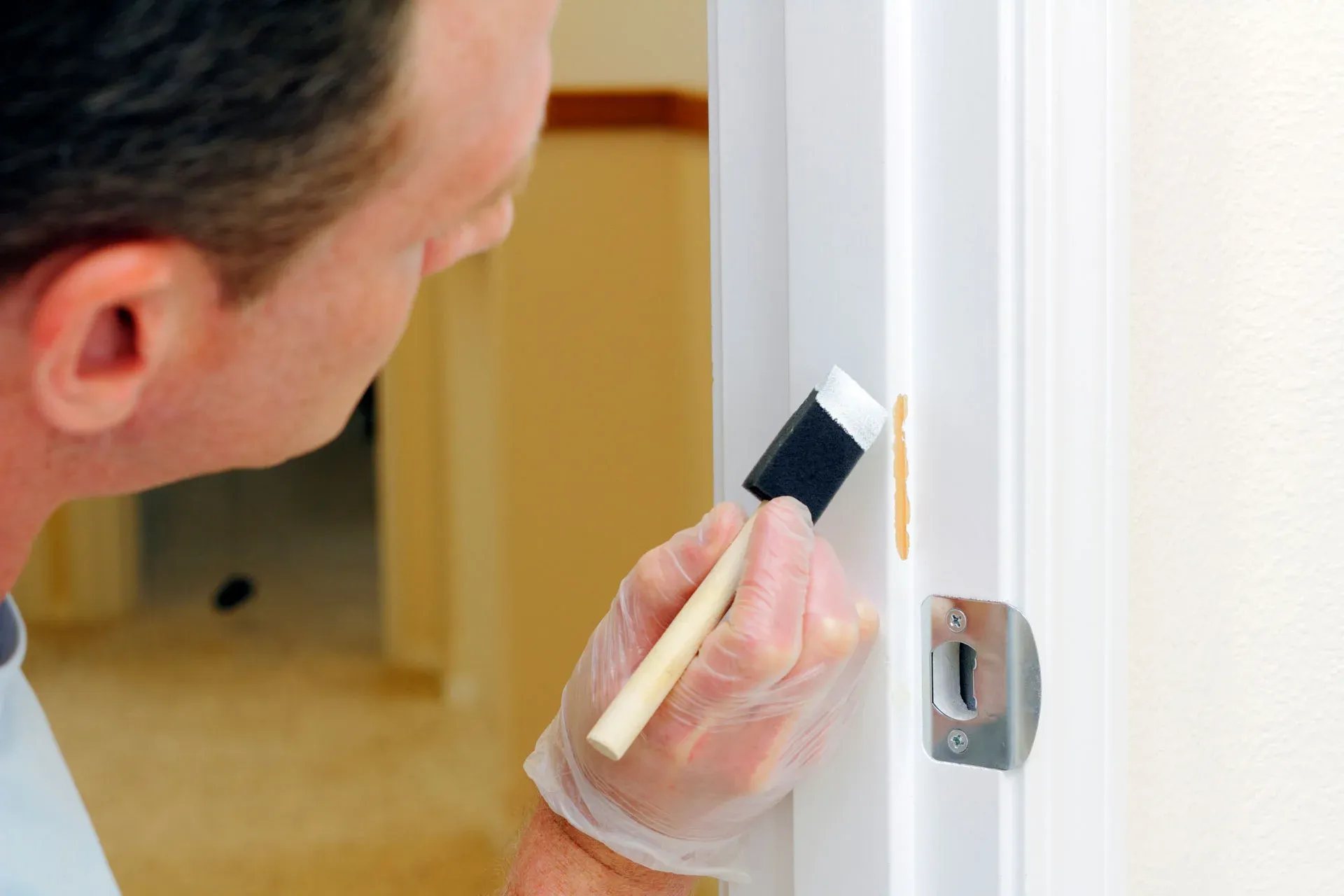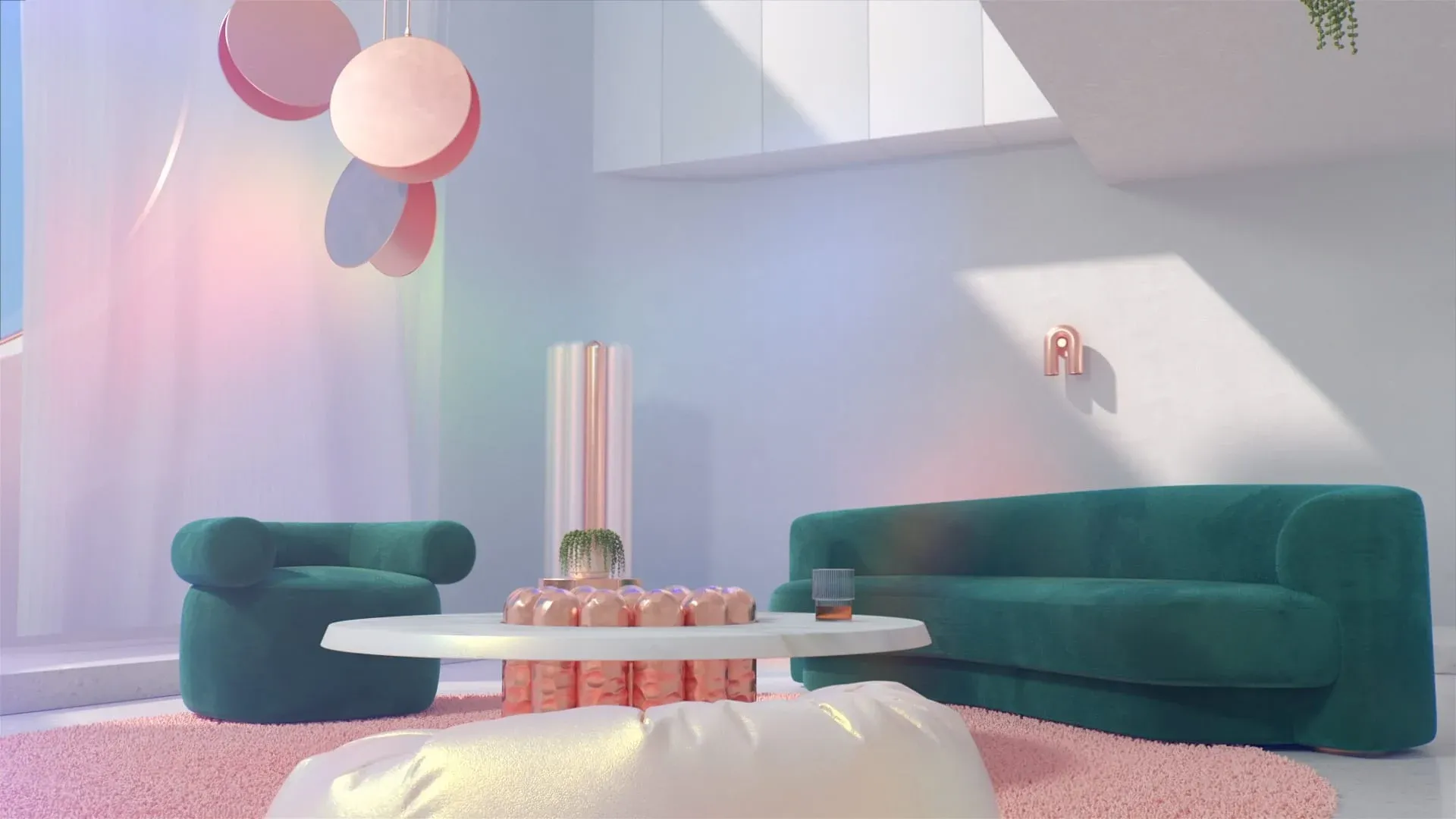Painting a house is one of the best ways to give it an immediate facelift. It’s also an essential form of maintenance — protecting your property investment from wear and tear, and your pocket from more expensive reparative maintenance. But how much will it cost you? On this page you’ll find what you need to know to start budgeting.
Wondering if it’s time to give your home a fresh lick of paint?
What's on this page?
- Special considerations
- Things you should absolutely not cut costs on
- Special finishes and surfaces
- Tax exemptions for commercial/rental properties
- How to assess a quote
- What about DIY?
- What to look for in a service provider
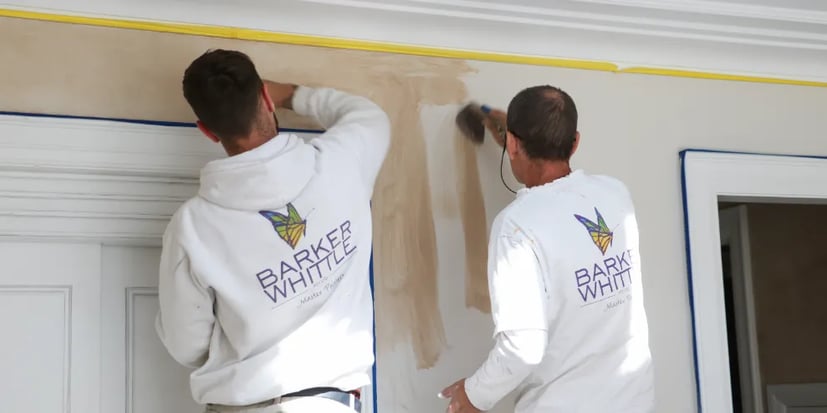
1. General Professional Rates
Whether you plan on tackling your home painting update as a DIY project, or aim to call in the professionals, gaining a sense for how premium painters cost of the job will:
- Give you a ballpark figure to compare your quotes against.
- Help you calculate the true cost of your expected DIY savings.
- Help you make informed decisions when comparing quotes from potential service providers.
How professionals work out the cost to paint a house:
Cost is based on total square meters to be painted.
The total cost quoted is ultimately determined by the size of the area that needs to be covered. A formula is used to calculate this, and takes into account both the size of the area to be covered and how complex it is to paint.
Each project is unique.
Reputable painting companies will issue a quote that takes your home’s individual quirks into consideration. Sites are assessed, and quotes compiled, on a job-by-job basis.
Costs are inclusive.
If a home painting company follows best practice, their quote will share a cost that includes labour and materials.
Paint costs don’t vary significantly.
Master painters will never compromise on the quality of the paint they use. Quotes you can trust will show little variation on paint costs, as they should only be using premium paints that have been proven to work — like the DULUX range.
A low quote may be a red flag.
The cheapest job will never be the best one. If you’re quoted professional rates by a company and they’re significantly lower than comparative quotes you’ve received, it may be a red flag. It can signal that the company works with unlicensed painters, or use low quality materials.
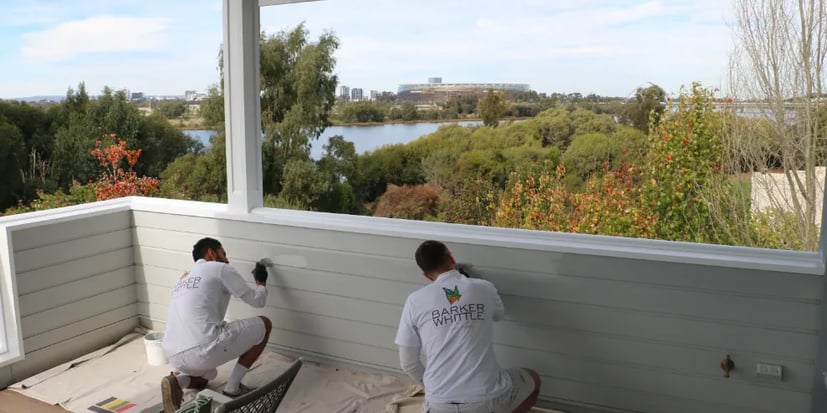
2. Painting the Exterior of a Home
What Affects The Cost Of Painting A Home’s Exterior?
Ultimately, the longer you leave it, the more it will cost to paint the exterior of your house. For instance, there are 4 ways paint protects your coastal property — each of them save you time and money in the long run, by treating paint as a first line of defence against the costly wear and tear homes expected to withstand. Assuming you’re not playing catch-up with the reparative maintenance due with a long-overdue paint job, the cost to paint the exterior of a house and the cost to paint the interior are similar. There are, however, a few unique factors you’ll have to consider:
Cost depends on surface area.
The main variable affecting the cost to paint a house exterior is the size, in square metres, of the area that needs to be painted.
Multi-storey homes cost more.
High buildings that need to use scaffolding to access those hard-to-reach places.
Unusual outdoor surfaces cost more.
Finishes like facebrick can push up the price of your paint job by up to 30%. These surfaces take longer to prepare, if you want to ensure a long-lasting, high-quality finish. The extra time and labour required contributes to the higher price.
Some things are better left to the experts.
Walls with textured finishes and aluminium window frames are two areas that are best left to master painters. While giving it a go yourself can be tempting, a DIY job in these areas carries a higher risk of failing — quickly becoming more expensive as you play catch-up with the even costlier repairs that can result from a job that didn’t quite hit the mark.
The Average Cost To Paint A Single- or Double-Storey Home
If a painting company is following best practice, they’d breakdown the cost of painting a house exterior into the following:
- Gutter and fascia, at AU$12/m2
- Eaves, at AU$15/m2
- Walls, at AU$18/m2
- Texture coats, at AU$26/m2
Keep in mind that these rates are a guide only, excl. GST and including labour, materials and sundry items. They’re based on a house exterior that requires basic preparation, has easy access that doesn’t require scaffolding and will be painted in 2 coats of neutral colours.
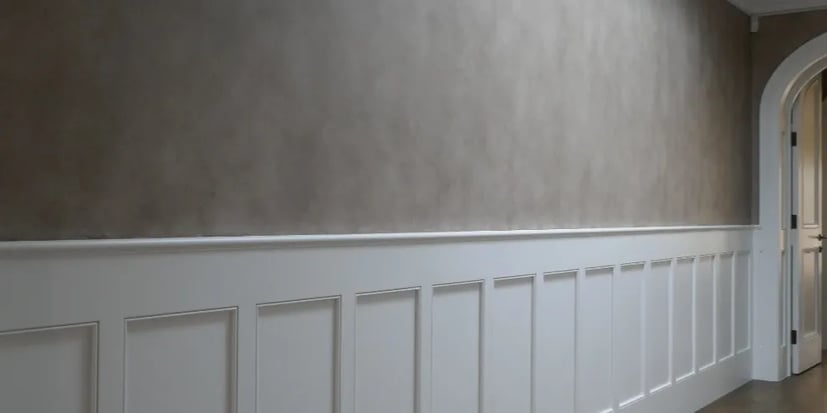
3. Painting the interior of a home
What Affects The Cost Of Painting A Home Interior?
Updating your walls with fresh colour is a great way to add value to each room, with just one paint job, and working out the cost to paint a home interior is similar to the process of working out how much it will cost to paint an exterior. There are a few additional variables to consider, though, that don’t affect exterior work. These include:
Access affects cost.
How easily can you, or the painting team, access the walls and ceilings that need to be painted? Rooms with hard-to-reach places, or strange dimensions may cost more.
Fixtures and doors can complicate a simple job.
Any room that requires extensive preparation or precision work will cost more than average. If your rooms require painters to remove and replace delicate fixtures, or work around multiple doors and window frames, you’ll see prices rise.
Some things are (still) best left to the experts.
If you’ve got your eye on a special finish, like polished plaster, you’ll need to call in specialists. While polished, or venetian, plaster can be a fantastic way to add character, elegance and flair to your home, it’s not something that can be done on a DIY weekend!
The Average Cost To Paint The Most Popular Rooms
If a painting company is following best practice, they’d probably breakdown the cost of painting a house interior into the following:
- Ceilings, at AU$15/m2
- Walls, at AU$16/m2
- Skirting boards, at AU$8/m2
- Doors and door frames, at AU$180/door and doorframe
These rates are a guide only. They exclude GST and include labour, materials and sundry items. They’re based on a house interior that requires only basic preparation, has no unusual access requirements and that will be given 2 coats of paint in neutral colours.
Average costs per room, in AU$
- Cost to paint a bedroom: AU$455–1138, at an average size of 11m2
- Cost to paint a bathroom: AU$230–455, at an average size of 6.5m2
- Cost to paint a lounge: AU$1365–3035, at an average size of 30.5m2
These numbers are just ballpark figures. Looking for something more accurate? Download this easy-to-use cost calculator and get a cost estimate that’s tailored to your own home!

Ready for a new look, but out of ideas? Check out these 5 home interiors to inspire your next home refresh
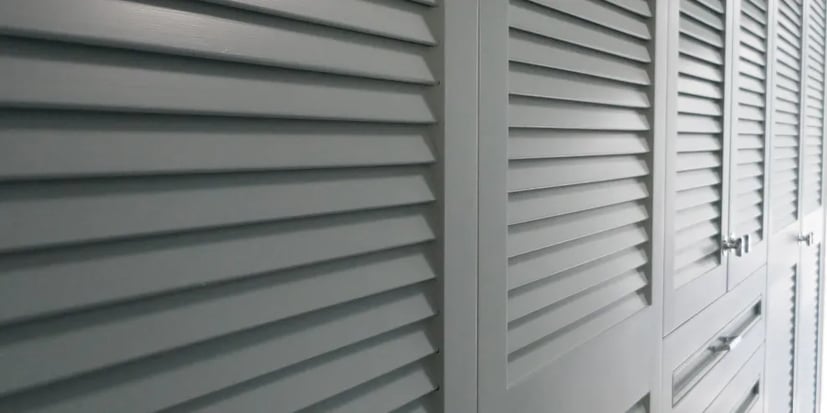
4. Tips to reduce the cost of a home painting project
While best practice strongly advises against cutting corners, there are ways you can reduce the cost of a home painting project. Here are some tips that help keep your project in-budget without compromising on quality:
Restrict your colour palette.
Choosing simpler colours can lead to a saving of up to 15%. Stronger colours cost more than neutrals. Finally, the more colours you include, the longer the job will take to finish, further driving up the cost.
Schedule work for out of season.
Work done during holiday periods, like December, will cost more — contractors may cost more, and your DIY job may take longer than planned as you work around finding supplies on all those public holidays!
Get everything done at once.
Making sure your rooms and/or exterior are paint-ready, and planning to get the whole job done in one go is the most cost-effective way to work. Save up ahead of time for those bigger projects, to avoid splitting up work periods — it will cost more if you do.
Paint regularly.
Save on costs by painting to a maintenance schedule. Best practice is to paint your house exterior and interior once every 7–10 years.
Budget for time as well as money.
A job takes longer than expected if you underestimate the work involved, or fail to plan for unforeseen circumstances. Working with a team of experienced professionals is one way to ensure things stay within budget!

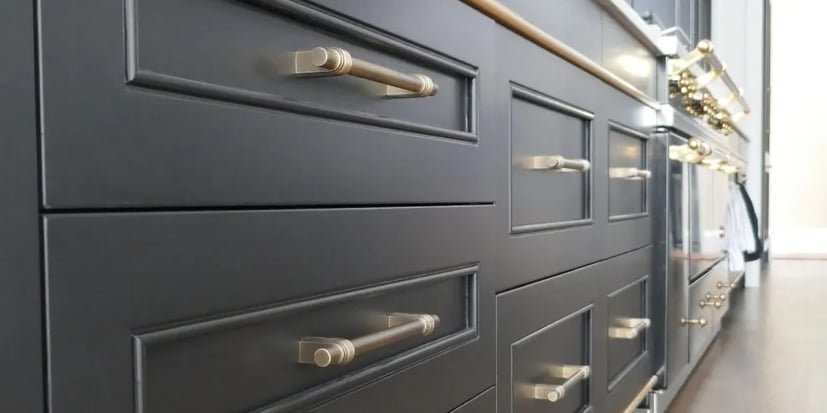
5. Special Considerations
No two house painting projects are alike. Each comes with their quirks, even if the project has very similar asks. Think about it — even two identical houses, with the same colour palette and being painted at the same time needn’t be the same. Why? Perhaps one is a rental property, and the other the home you plan to live in. That simple fact has tax implications!
This section explores some of these special considerations you’ll need to keep in mind to ensure you get the right cost, for exactly the home painting effect you want.
The Top 5 Things You Should Never Cut Costs On
Paint.
Never, ever, cut costs on paint. The paint may comprise up to 10% of the total cost of your home painting project, but going for cheaper paint may only save you 1–2%. You’ll also be able to notice the difference on your walls within 6 months, instead of the expected lifespan of 7–10 years for high quality paints.
Number of coats.
Trying to reduce your costs by only applying a single coat of paint will leave you unsatisfied — it won’t look like the colour you selected, and you’ll have to redo the job much sooner than if you’d applied the standard double coat.
Damp proofing.
Damp proofing areas, like bathrooms, that are regularly exposed to moisture will save you money in the long run. It might be tempting to paint wet areas with regular paint, but protecting these areas from rising damp and condensation by damp proofing will protect your home structurally — preventing moisture from reaching construction timbers and preventing dry and wet rot.
Additional costs
A home painting project often has additional costs that aren’t always obvious to those tackling one for the first time. Here are three things to look out for:
Easily overlooked expenses.
Surface preparation, masking, tools, drop sheets — these seemingly “small expenses” add up quickly. Remember to budget for them.
Additional preparation time.
It’s easy to underestimate the amount of preparation time and effort you need to invest, even before you lift your first paint brush.

Face brick.
When you’re working with a special surface, like face brick, you’ll need to factor in additional time and money to get the job done to a high standard. Face brick walls take up to 30% more time and product to prepare and paint.
A reputable painting company will factor these expenses into their quote, so you don’t end up with last-minute surprises. This is just one advantage of hiring professional painters — dive deeper into the key reasons you may want to call in the experts in this blog post.
When do you need a specialist?
There are three highly specialised painting jobs you should always leave to the professionals. These are:

Textured finishes.
These are incredibly expensive to fix if something goes wrong. And, if you’re hoping for a particular finish, the experienced eye of a master painter will know exactly how to apply each coat to turn your dream into reality.
Aluminium window frames.
While there are blog posts out there that make painting aluminium window frames sound like an afternoon’s work, it’s actually a highly specialised task. Preparing the surfaces and ensuring total coverage with the correct paint takes an expert eye, to prevent future structural maintenance problems taking root.
Face brick.
Painting a face brick wall is not for the faint of heart, or those with a busy schedule. It requires specialist preparation, and once you’ve painted over face brick, the wall can never be returned to its original appearance — definitely one for the experts!
Tax exemptions for commercial and rental properties
If you’re planning to paint a rental or commercial property, you’re in luck! According to the Australian Taxation Office, the cost of your painting job may be tax deductible.
In the case of rental property, you’re eligible to claim if the maintenance prevents repairs the deterioration of an item that occurred while renting out the property. This could include the repainting of faded interior walls.
How to assess a quote
If you decide to call in the professionals, it’s worth spending time to find a reputable company that delivers the effect you want at a reasonable cost. Asking for comparative quotes is a great first step; but once you’ve got them, how do you assess them? Receiving a quote that includes these 3 key details is a sure sign you’re dealing with professionals who won’t let you down:
A professional letterhead.
Looks aren’t everything, but a letterhead without a fixed address and valid contact details may indicate you’re dealing with a fly-by-night outfit.
The quote is detailed.
If your quote doesn’t include a detailed scope of your project, with costing per phase, this could be a red flag.
Insurance, licencing and registration is displayed.
Check that the document includes legal details of the painting company’s licence, insurance and registration details. Ensure this includes the company’s building commission number.
Wondering who to contact? Get started on your search for the right company with some key factors to keep in mind when hiring home painters.
What about DIY?
Tackling a home painting project yourself can seem like an attractive way to cut costs, but it can easily be a false economy. There are some common reasons why most DIY repainting fails. These include:

You don’t always save on labour costs.
There’s a common misconception that you can save up to 75% on labour costs. Technically this is true, but you’ll have to factor in the cost of the tools and materials you need, which severely eats into this saving. When you hire professionals, tools and materials are factored into the quote.
Health concerns.
While the VOC compounds in paint are safer these days, and many paints are odour-free and made with fewer chemicals, DIY is not recommended for anyone with allergies. Professional painters will come fully kitted with all the safety gear they need, as well — saving you the trouble of buying equipment you may only use once if you tackle the job yourself.
Extended disruption to home life.
A DIY project that you’ve only got time for on the weekends will take far longer than it would if done professionally. DIY projects often fail as homeowners run out of steam halfway through or struggle to cope with the break in routine. As any paint job will necessitate a disruption, it may be worth minimising it with professional help. A reputable painting company can often do a 3-month DIY job in a week, and they’re experienced at delivering to deadline!
Substandard materials.
Professional painters often have access to the highest-quality materials and paints that either aren’t available to the public, or are only cost-effective at trade prices. Any DIY project is limited to what’s available at the local hardware store, which can limit the overall success of the project.
They don’t contribute to your home’s resale value. Your property is an investment. A professionally painted house will retain or increase in resale value far more than one that’s had even the most diligent DIY paint job applied. If you’re thinking of selling, calling in professionals can positively impact the offers you receive.
About half of all DIY projects end up needing to be repaired by professionals. If the challenge of DIY is too tempting to resist, these two resources will help you get the best results:
These are a great start to arming yourself with what you need to know to get the results you’re dreaming of, efficiently and reliably.
What to look for in a service provider
Sometimes deciding between a DIY paint job and hiring the professionals is no contest. For whichever reason, when you’re on the search for expert help, it pays to recognise whether you’re likely to be satisfied with their work or to be left disappointed. Here are essential characteristics of a reputable painting company:

Fully insured and licenced.
The company and its staff should be fully insured and licenced with all relevant authorities.
Clean, honest and respectable staff.
Prioritise a company that ensures its staff are professionally dressed and groomed, with a uniform or dress code, and who vets each team member by police clearance.
Low staff turnover and no subcontractors.
A company with an excellent reputation and work ethic will be built around a team that’s worked together for years. If they only use in-house staff and avoid subcontractors, you can be sure of a quality finish.
Guaranteed work.
Only choose a company that guarantees their work under a warranty. Five years is the industry standard.
Experienced and knowledgeable.
A company that’s been around for years has likely proven that their work stands the test of time. Keep an eye out for companies of longstanding that combine this experience with the latest product knowledge, and you’ll enjoy a high-quality return on our investment into their services.



















